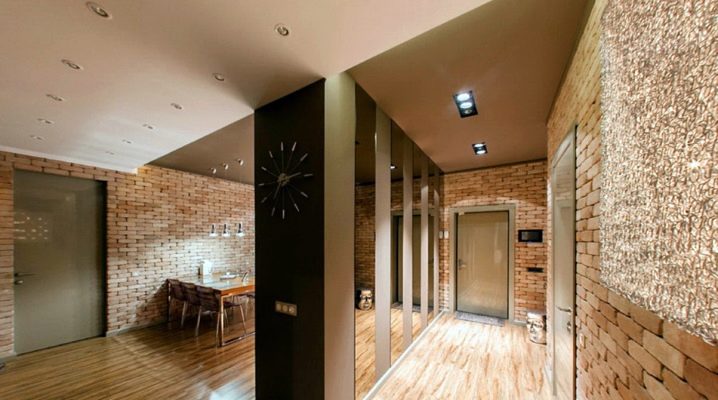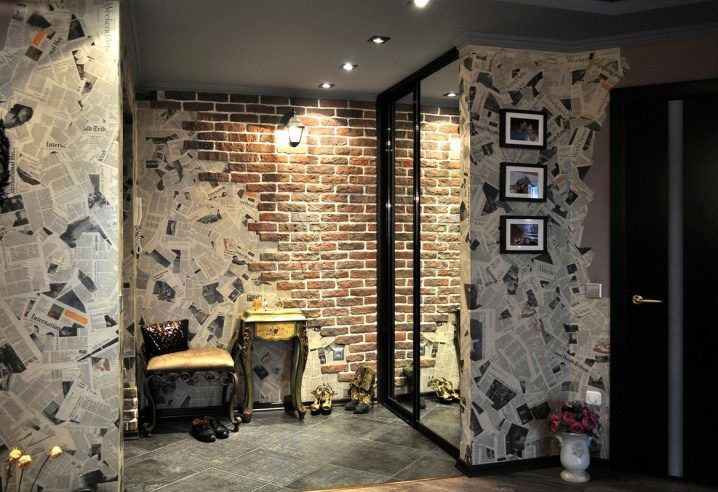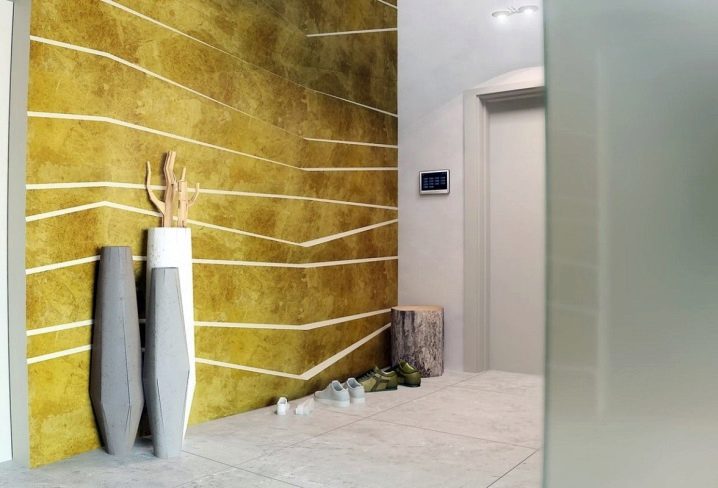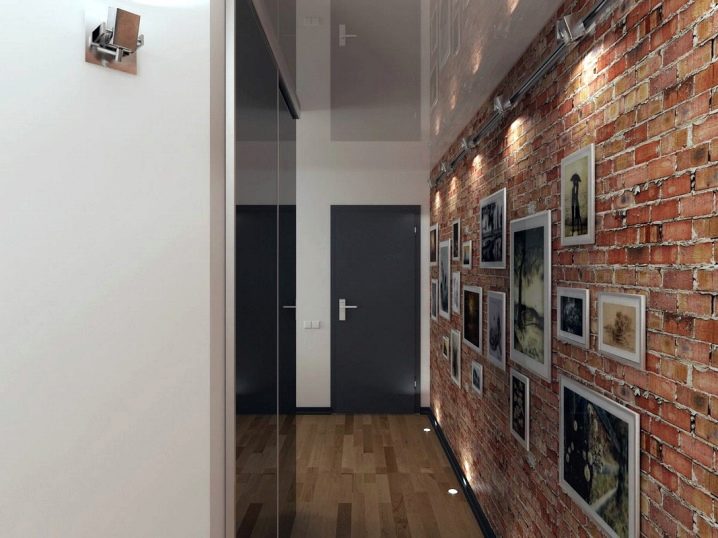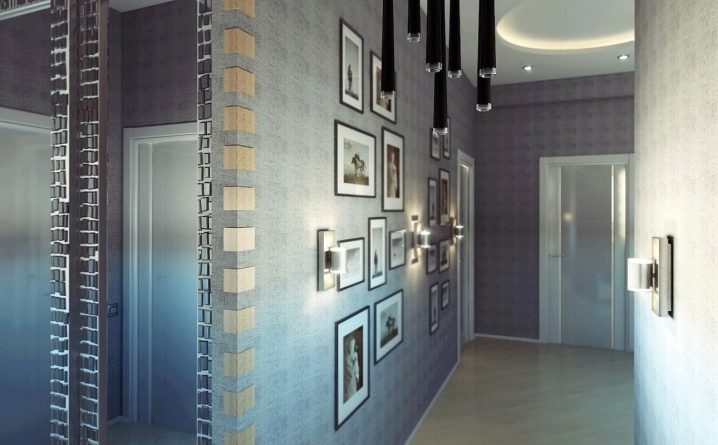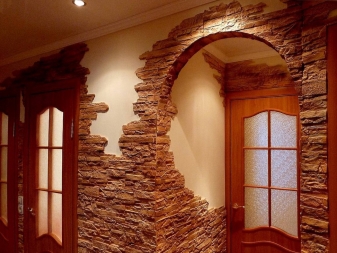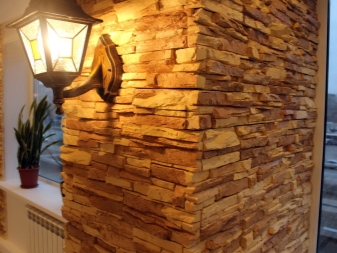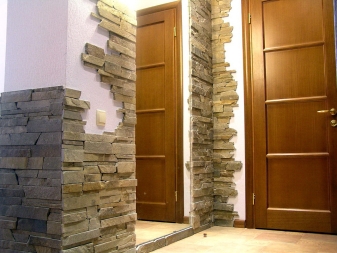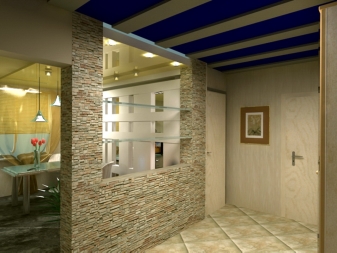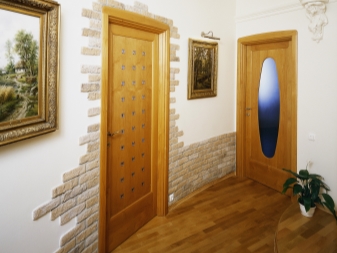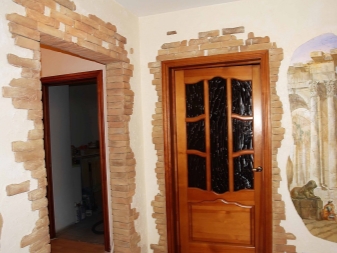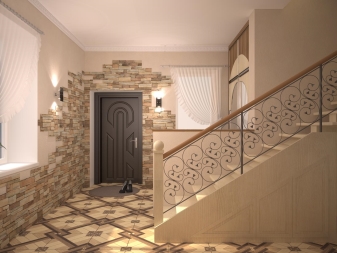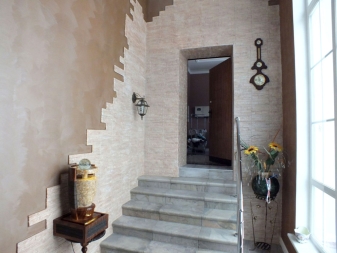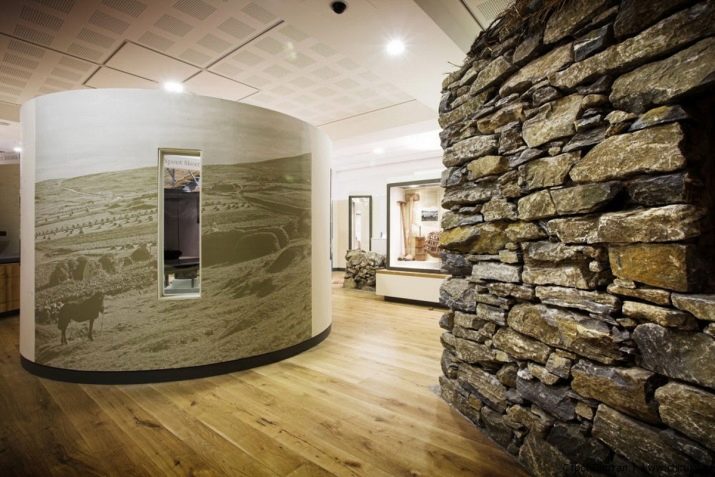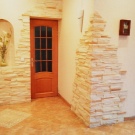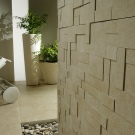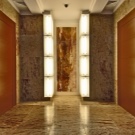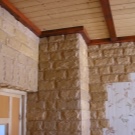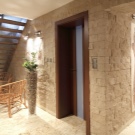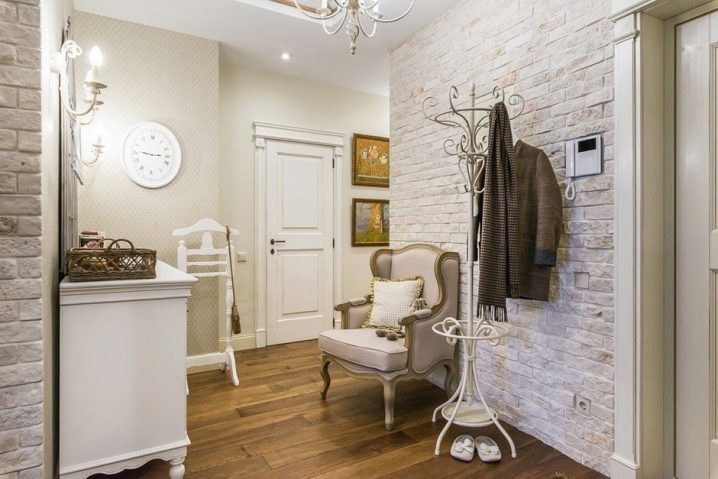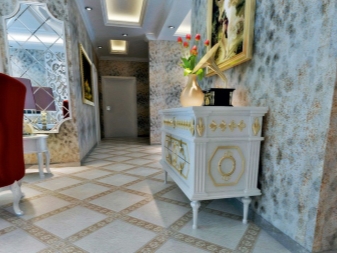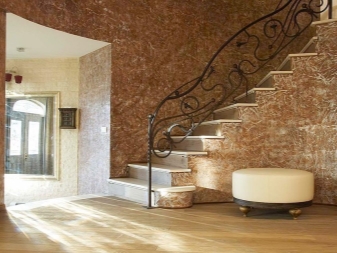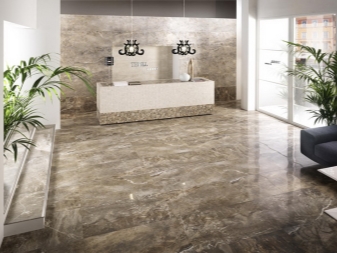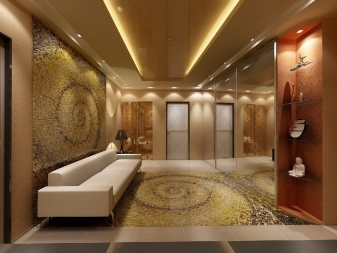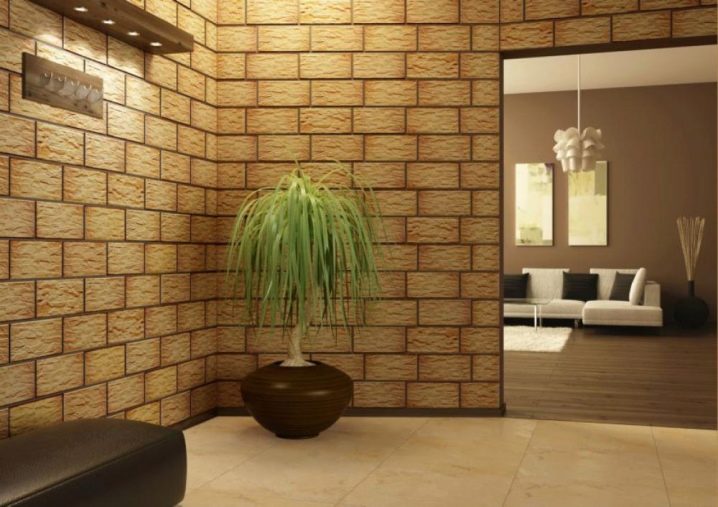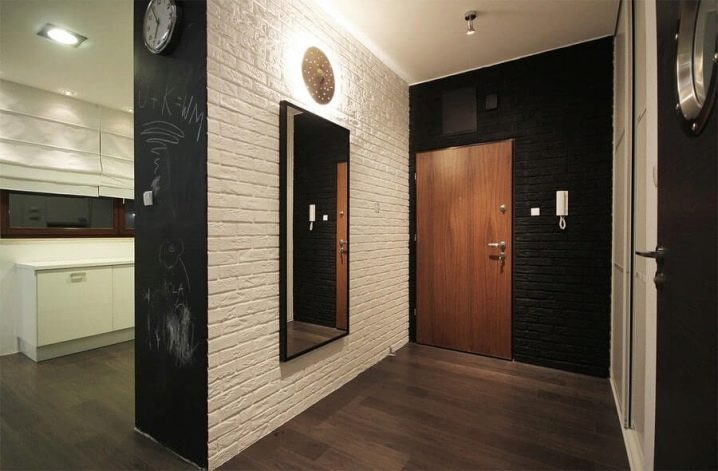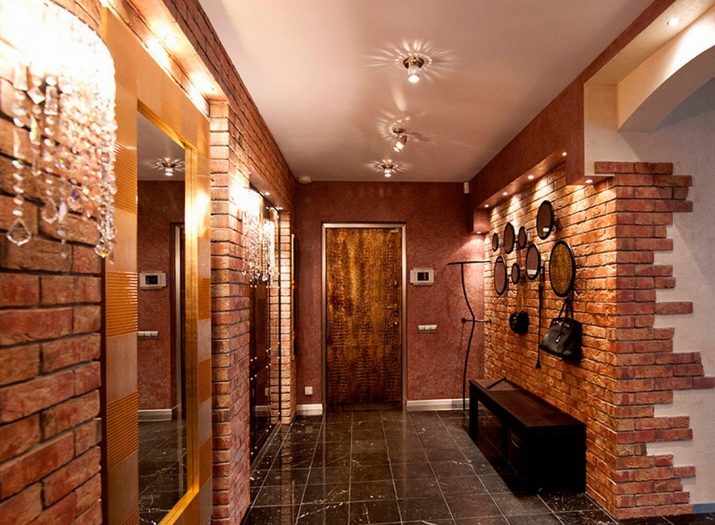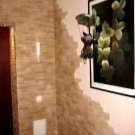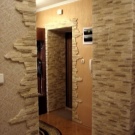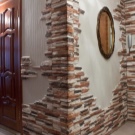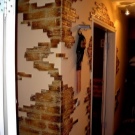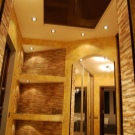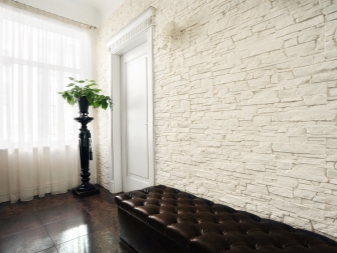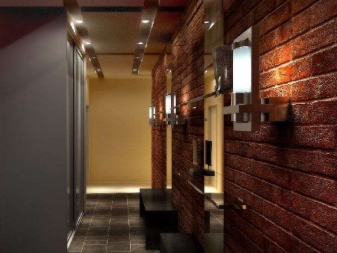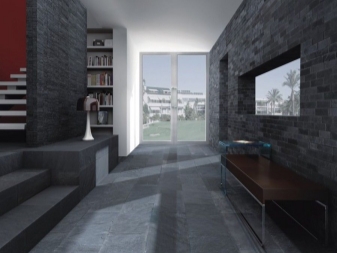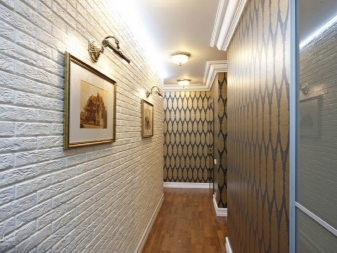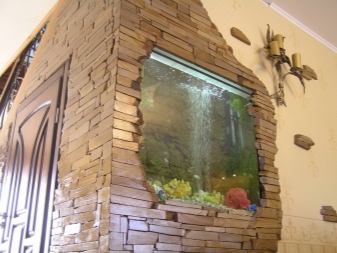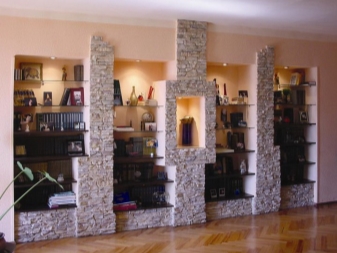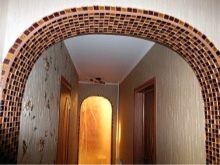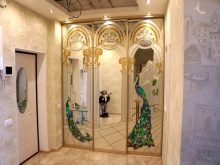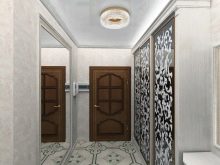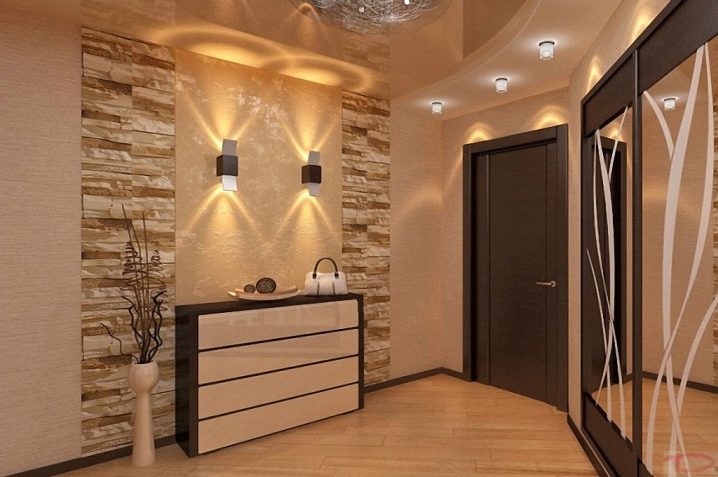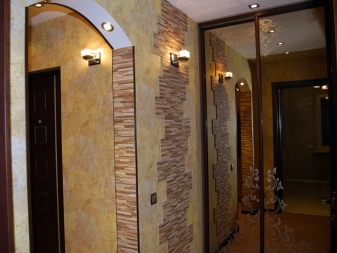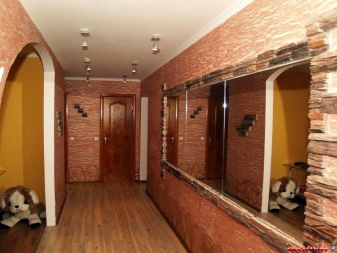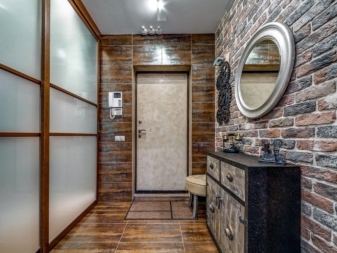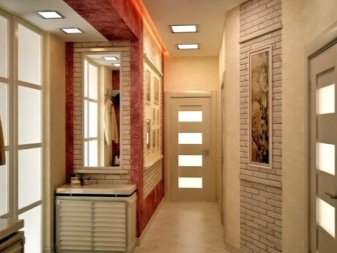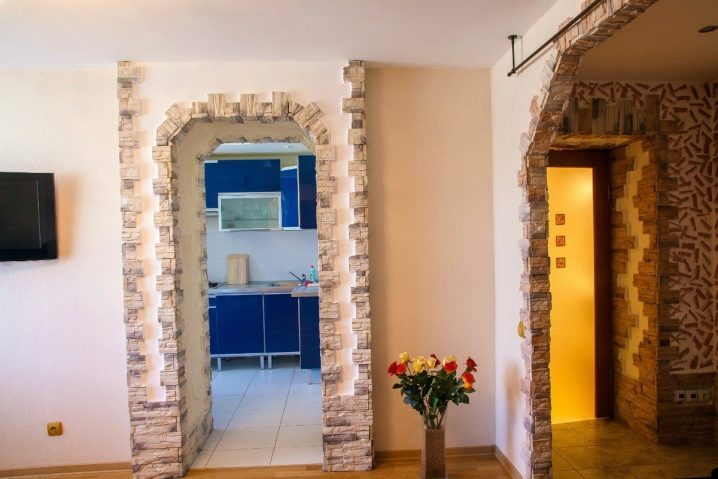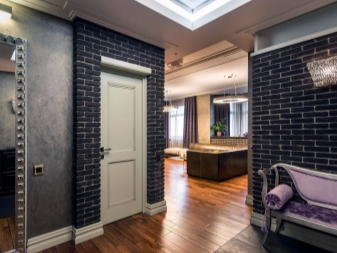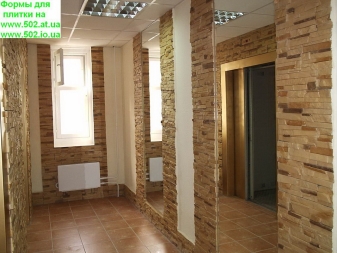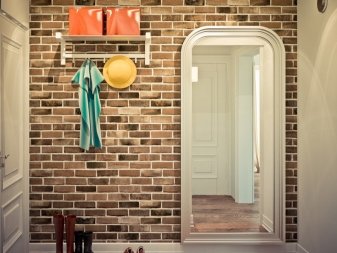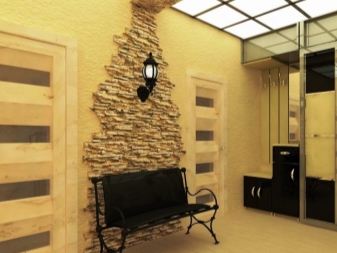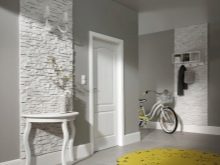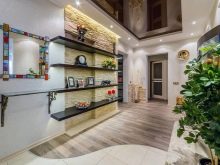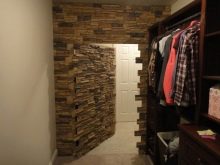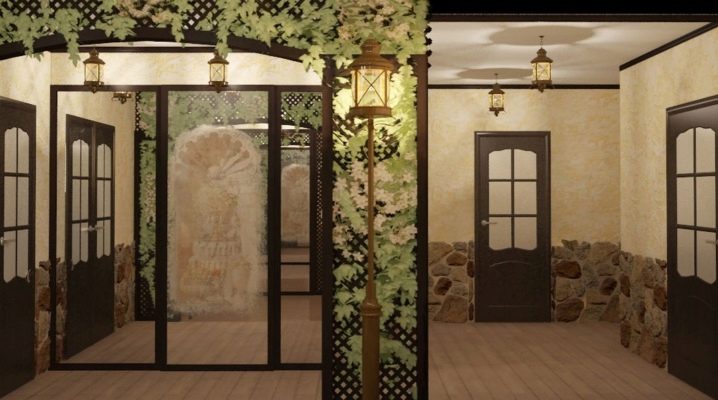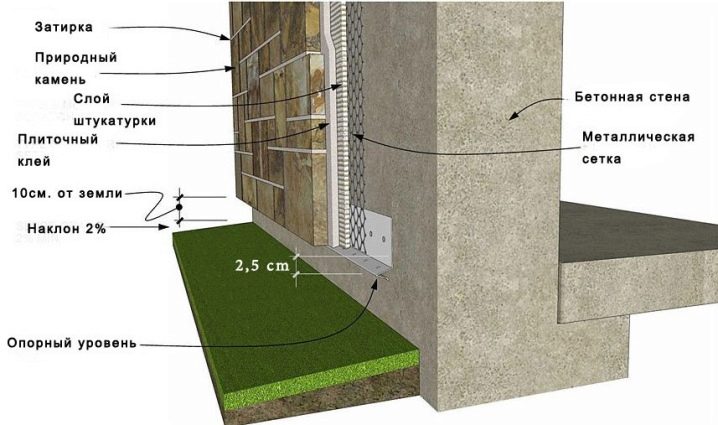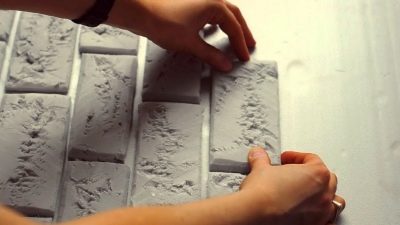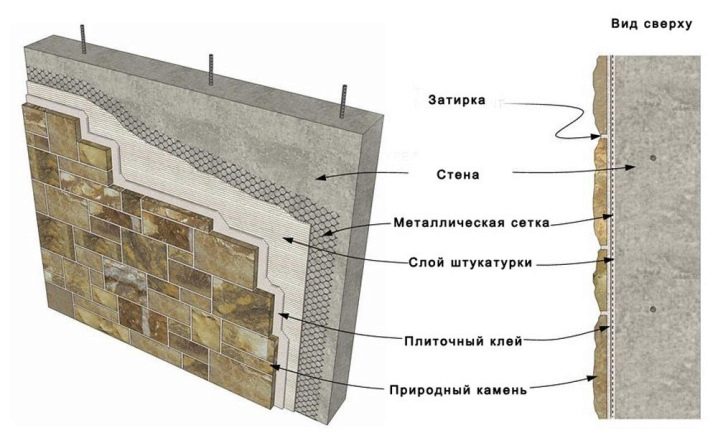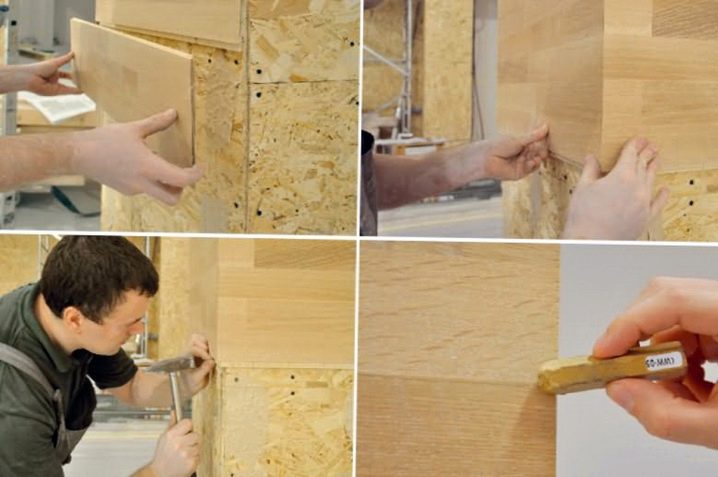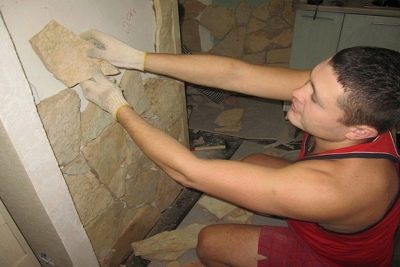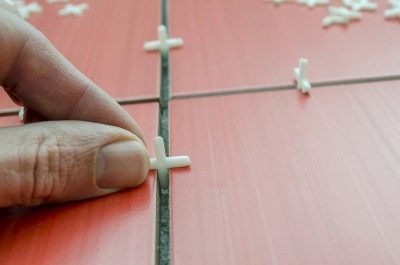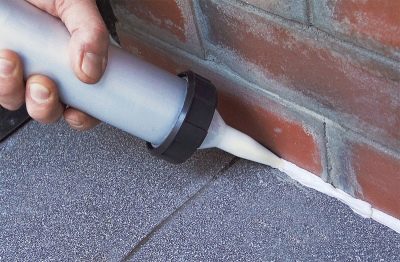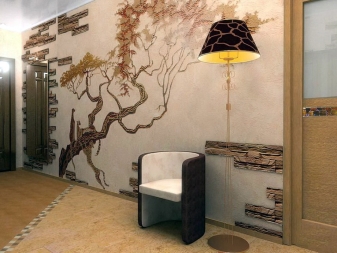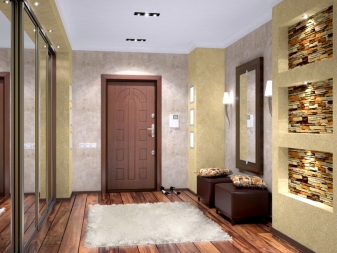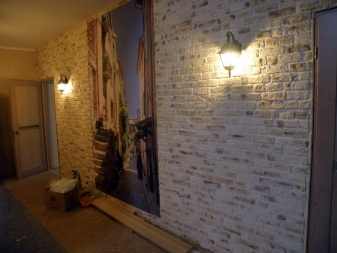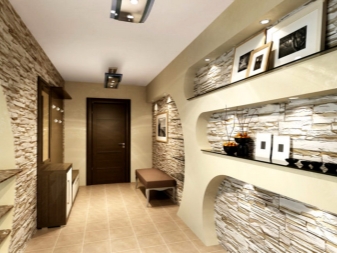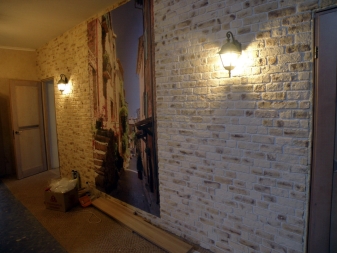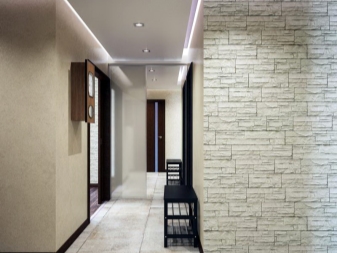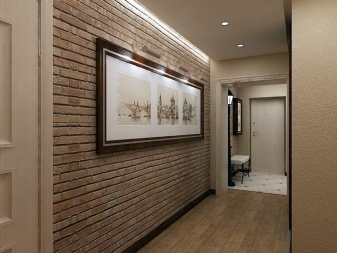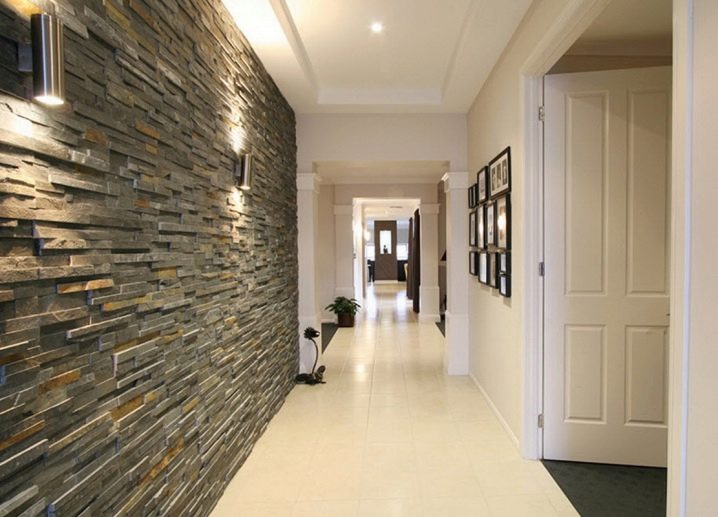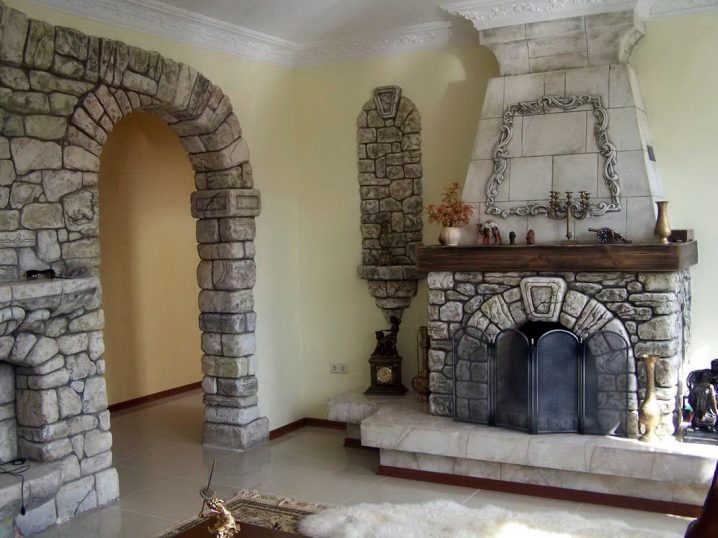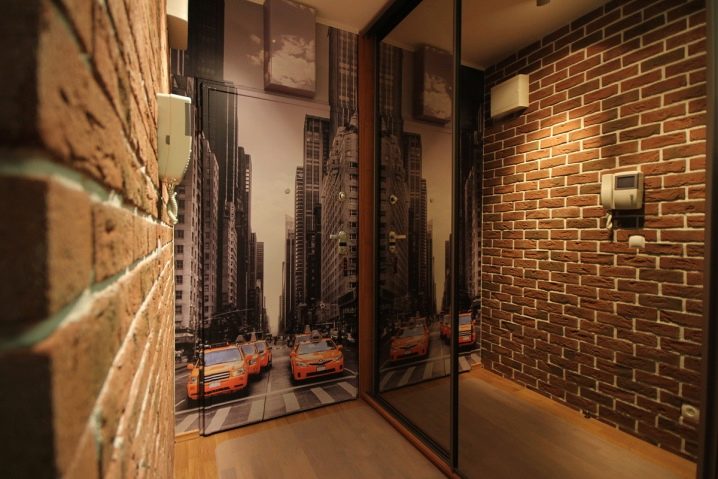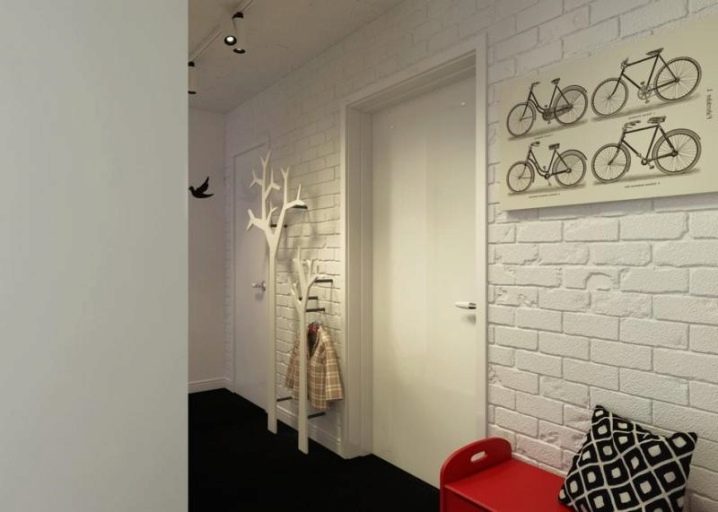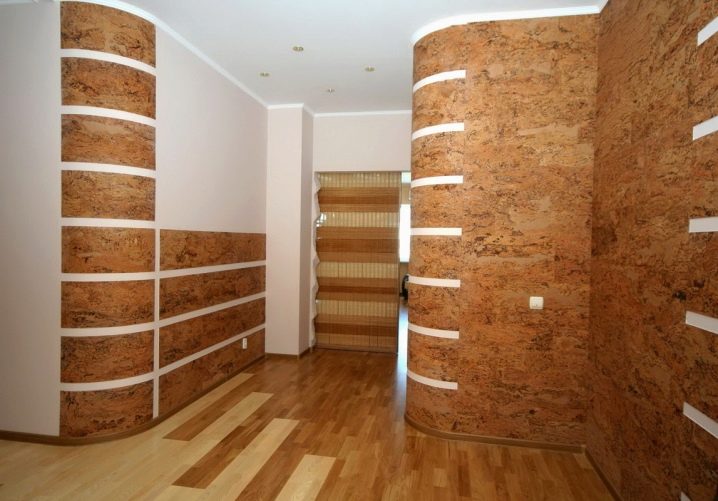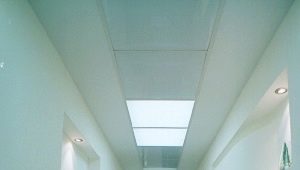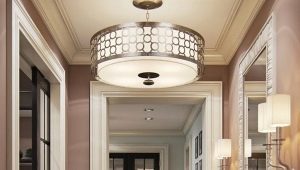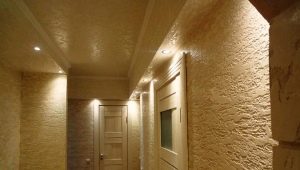Making a decorative stone in the hallway: ideas in the interior
Decorative stone has a presentable appearance and fits perfectly into modern interior styles, so this method of finishing has become very popular recently. Stone decoration is able to give any room a stylish and original look.
Benefits
It is very easy to name the reasons why decorating with stone in the hallway becomes popular. Here are just some of them:
- Finishing stone is a great addition to any modern hallway.
- It is perfectly combined with other decorative elements.
- For decoration you do not need to align the surface of the wall.
- Not afraid of exposure to moisture, resistant to wear, not deformed and does not crumble.
- It has antibacterial and dirt-repellent properties.
- It creates a sense of calm and reliability.
- Do not lose relevance in the interior.
- As detergent you can use any detergent.
- Artificial decorative stone has a small weight, so you do not need to further strengthen the walls during the repair. For natural stone it is necessary to increase adhesion rates.
- Durability - the surface is not deformed and not damaged. The service life with proper care will be about 15 years. If desired, at this time you can change the color of the walls and stone several times.
- Protects the surface of the walls from the formation of mold and mildew.
- Possesses fire-resistant properties, does not burn and does not melt.
- Fast and not laborious installation.
The disadvantages of this type of decoration can be attributed to the high price of materials, but still the total cost is influenced by the type of stones and laying options.
Types of stones
When you design an apartment and a house you want to use natural materials, but this is not always justified, especially when it comes to decorative stone decoration. Of course, the words “natural” or “natural” sound more pleasant and tempting than “artificial”. However, one should not succumb to outdated stereotypes that are not relevant at the present stage of production development.Wild natural stone is very expensive, and when you make it using it, you need high qualifications and experience.
In the production process, artificial stone can take any shape, thickness, structure and color, while at first glance it is not so easy to distinguish natural stone from artificial stone. The main advantages of artificial stone are as follows:
- Low weight;
- A wide range of operating temperatures allows the use of artificial finishing material in the design of fireplaces;
- Does not fade in the sun, which allows it to be used for exterior decoration of a building;
- Unpretentious in the care and cleaning;
- Durable and durable, with proper installation and quality care will last about 15 years.
Material
It may sound strange, but an artificial decorative stone is made on the basis of natural components. The main materials in production are as follows:
- cement;
- gypsum;
- granite, quartzite and marble;
- sandstone;
- clay.
Stone of cement has high strength and is not afraid of moisture. It can be washed both with a stiff brush and liquid products.This tile can be used not only in the hallway and in other premises (living room, bath or kitchen), but also for exterior decoration of the house. Cement tile is also heavy. Compared to other species, it is more than 2 times heavier, therefore, to decorate a room with such a stone, it is necessary to additionally strengthen the walls.
In addition, cement finishing materials are hard to cut, for this it is necessary to have a grinder and have some working skills. the high price of cement tile is compensated by a long operational life and reliability. With proper care, such stones will retain their original appearance for a long time.
The agglomerate is based on natural crushed stones: granite, quartzite and marble. The rock crushed to the state of small crumb is combined with cement and polymer resins. Some types of decorative tiles are additionally colored with pigment. Such tile has inclusions of natural fragments and a smooth glossy surface.
A flexible decorative stone is made from sandstone. Hard rock is cut as thin as possible and polished to a smooth surface. After that, a slice of sandstone is pasted on textiles.Due to this method of production, the natural pattern, texture and unique flexible design are preserved.
With the use of clay is obtained clinker tiles, which is very similar to a brick. It is produced using the same technology: the clay is burned in a furnace and is glazed. The thickness of the clinker tile is no more than 3 cm. This material is often used in creating an interior in the style of a loft or high-tech.
A stone of plaster has similar characteristics: reasonable price, low weight and the possibility of mounting on a wall of plasterboard. But these types of decorative materials are afraid of moisture and can collapse while wet. Therefore, after installing plaster or clinker tiles, it is necessary to cover the surface with acrylic varnish or protective impregnation.
Colors
Decorative artificial stone can have different colors. In the production process, a coloring pigment is used, which is added to the mortar, which is why the tile has a uniform uniform color over the entire surface. The next stage of production is the coloring of the front surface in the same color range by tint means, thus achieving a color similar to natural stone.With such a two-step method of coloring, even during damage or chipping of the stone, the colors will not differ.
In the second method of dyeing, paint is applied only on the outside of the stone. In this case, the inner and outer parts of the tile have different colors.
- Decorative white stone can be painted independently in the repair process. So, any tile can have a natural natural light shade or be treated with special construction paint. Also, white color looks great in any room.
- Black stone looks mysterious and attractive. It can be used with contrasting or solid dark colors.
- Saturated red the stone is perfectly combined with dark and bright elements in the corridor.
- Beige and brown - similar to natural shades suitable for almost any style.
Mosaic stone is great for decoration in the hallway. It uses elements of different color and shape.
The form
The shape of the decorative stones is no different from natural:
- Brick. The most popular ones imitate various ways of laying ordinary bricks;
- Rubble. They have a natural color and are similar in shape to pebbles or boulders;
- Tiled. They have a clear square or rectangular shape with chips and scratches on the outer polished surface, they are externally similar to natural marble or granite;
- Chipped. They have an even color and resemble untreated rock;
- Mosaic. Such tiles are customized to a certain shade or shape, after the completion of installation work with such material the wall looks very unusual;
- Sawed. It has a clear rectangular shape, the front part of the stone does not undergo additional processing and has a rough surface;
- Fantasy. They have a complex shape and structure, the colors are not similar to natural natural shades, it is used for unusual wall decoration.
Types of rooms
Designers say that a special role in the apartment is assigned to the entrance hall, because this is the first room, as if meeting guests. Due to its properties, the stone is most suitable for finishing the corridor, because it is in the entrance part of the apartment that most of the dirt and dust accumulates, and it is the hall that requires careful and frequent cleaning.She can give a stylish look or create the effect of an old room.
Stone decoration can be perfectly combined with decorative plaster, wood, ordinary wallpaper, tile, stucco or glass. It is considered an excellent background for living plants and metal products.
When you make a small hallway, it is important to know the measure and not to overdo it with finishing materials. For decoration with stone, it is better to abandon the combination of different types of materials, and opt for one option.otherwise, you risk making the decoration too variegated and overload the room. For one hallway, a combination of two types of decorative fragments is considered optimal. At the same time materials can have one color, but differ in texture.
Artificial stone has excellent thermal insulation properties and can be mounted on the "cold" wall. You can also make an unobtrusive transition from the corridor to the kitchen. The style combination will make the overall interior of the apartment softer and more complete.
Design options
To decorate the hallway is not necessary to cover all the walls with stone. Such a finish can be a waste of money.A more rational solution would be to create and place accents in certain sections of the corridor. Very nice looks fragmentary design of the wall near the door, mirror or furniture. Partial lining has a stylish look, it can be used to decorate the following interior elements:
- Openings near the doors and windows. For this, it is better to use large stones;
- Arched openings. In this case, a flexible stone is perfect;
- Contact zones and areas that are used to store upper clothing and footwear;
- Cavities and niches;
- Plots at the corners. Smooth the sharpness of the corners with a flexible stone;
- Mirrors;
- Furniture or stone decorated fireplace look very appropriate and concisely in any interior. With all this framing can have clear lines and geometric shapes with color transitions, or laid out randomly.
The stone can be used to decorate many modern styles: loft, hi-tech, eco or minimalism. For a natural eco style, it is important to be able to combine natural elements with live plants. You can place pots with green plants on the floor along the stone wall, this will add lightness and airiness to the interior.
It is worth noting that the stone can also be used in a classic style, while you will be as if in a castle. The main thing that is necessary with this design is a large space. If your entrance hall is spacious enough, you can safely choose light brick tiles as decoration for the whole wall. In any case, a large mirror in a stone frame looks very aristocratic and stylish. In addition, the design of decorative stone walls is possible not only inside the apartment, but also at the entrance near the entrance door.
How to choose a material?
When choosing tiles for interior decoration it is necessary to proceed from the texture, color, size and shape. To repair a small corridor, it is better to choose an artificial stone that has a minimum thickness. This way you can lay the tile in a thin layer, and you will not need to carry out additional work to strengthen the wall. You can also use embossed wall panels with natural stone pattern as a decor. Such finishing material is mounted much faster and does not require a smooth aligned wall.
Usually,in the corridor, artificial lighting methods are used - spotlights and light bulbs, so for a narrow dark hallway it is better to choose a light stone that will visually expand the space. Calm shades of stone do not weigh down the space and do not “crush”. At the same time, the color scheme of the tiles should be harmoniously combined with the rest of the decorative elements.
Before buying a stone, decide on the design option and the amount of material. Estimate on the wall the approximate location of the decorative elements and count how many "squares" of the finishing material are necessary. About 10-15% add prozapas for trimming and possible changes in the installation process. Thus, you can calculate the required amount of decorative stone for the hallway. As the reviews show, the entrance hall with stone is a very popular trend in modern design, but it must be remembered that working with an artificial stone requires special care.
How to carry out laying?
You can lay out decorative tiles with your own hands, but much depends on the material of the stone. To finish the wall with artificial material, you need to stock up on cement and glue, and in order to lay the tiles perfectly even, you will need a regular or laser level.For some materials, such as, for example, for a stone based on cement, a grinder with a diamond disc will be required. The front part of the stone has a rough structure similar to natural stone, and the second side is similar to ordinary tiles or bricks, so you can make repairs in the hallway quickly and without any special skills.
A prearranged plan will ease the installation process. To do this, you can use special design programs, but if you do not have work experience, you can get by with a sheet in a cage. Before starting work, you can place a stone on the floor to determine the fragments, proportions and their installation. As a rule, many try to “improvise on the spot” and immediately start the installation work, skipping the planning stage, but it is important to remember that building glue dries out very quickly and it can be quite difficult to change anything in the process.
Before starting work it is necessary to prepare the surface - this step can not be skipped. Without preliminary preparation the decorative stone will not keep on a wall. The surface is cleaned from old wallpaper and peeling plaster.After this, the priming process takes place, the type of material is selected based on the stone: cement, gypsum, agglomerate, sandstone or clay. If the walls are uneven, then you need to align them.
The wooden wall is covered with waterproofing and then primer. After all the preparatory work, you can proceed to the installation, the stone is mounted on a bare wall with plaster, while there should be no contamination on the surface of the walls, this can reduce the quality of adhesion of the finishing material to the base. It is possible to glue decorative elements on the wallpaper only with fragments, but at the same time one cannot be sure that the paper wallpaper will withstand the stone and will not break with time.
The stone should be mounted strictly horizontally, so put the markup on the wall with a pencil using a level. Work is more convenient to start from the bottom of the corner. With a partial decoration of the wall, the back of the decorative element is cleaned with a brush from dust and debris, then wetted with water, an even layer of special glue is applied with a spatula. The tile is pressed tightly against the wall with the obligatory control over the level. For better grip, you can tap on the surface of the stone with a rubber hammer.
Liquid nails can be used instead of glue, but this method is suitable for mounting a small amount of tiles on a plasterboard wall. A layer of glue may appear between the tile and the wall; it must be removed with a wet or dry cloth. If this is not done immediately, the glue can quickly dry out on the face of the tile or on the wall.
If it is necessary to cover a large part of the room with a stone, then it is better to apply glue to the surface of the wall and then alternately attach tiles. Please note that some stones are buried - the side edges have the same color and finish as the front side. Such fragments are used to complete a decorative series. Also, some manufacturers offer ready-made tiles for an external or internal corner, with its help the installation process is greatly facilitated.
After the glue dries, you can start grouting. It is up to everyone to decide which stitch to choose as a stone, depending on their wishes and work experience. Several options: seamless / continuous or from several millimeters to several centimeters. Special plastic crosses or wooden locking wedges are used to create identical seams.
Grout for joints looks like a masonry mortar.Color can be chosen to match with stone or contrast. With the help of a building syringe, the seam is filled with a solution completely or only half the width of the stone. The final stage will be the processing of decorative parts with acrylic varnish.
If you decide to decorate the walls of the hallway with a decorative stone, you should review the lighting system. Designers advise to abandon the central ceiling lighting and combine evenly spaced lamps on the ceiling and walls. As an additional lighting, you can use sconces or LED strip. Thus it will turn out to emphasize the relief and natural beauty of the stone.
Decor with a stone is a very expensive method of decoration, so calculate the budget in advance. However, you should not forget that artificial decorative laying is very durable and reliable, so for the next 15 years you will not need to spend additional time, effort and money on repairs, and it will be enough just to refresh the color of the walls.
Elegant examples in the interior
With the help of decorative tiles that imitate natural stone, you can decorate not only the walls, but also the floor.Such a beautiful coating does not cause much trouble in cleaning and care.
The entrance hall trimmed with gray decorative stone looks incredibly stylish and unique.
Decorative tiles can also arrange arched doorway.
Imitation brickwork is gaining popularity and is increasingly in demand among lovers of modern style loft.
Anyone who has made repairs at least once knows that white color expands the space, so for a small corridor choose light-colored finishing materials. The interior will not look dull and dull.
Textured natural surface of the stone stands out against the background of smooth light walls.
An overview of the walls of the hallway stone, see the following video.
